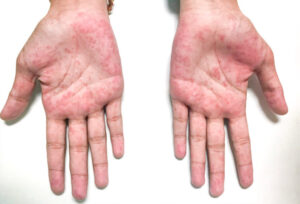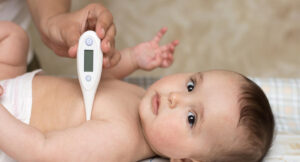When we think about childhood illnesses, common colds, flu, or chickenpox may come to mind. However, there are rarer conditions that, while less prevalent, can have a significant impact on children’s health. One such condition is Kawasaki Disease, often referred to as the “silent disease” due to its subtle early symptoms that can lead to severe complications if left untreated. In this article, we’ll explore what Kawasaki Disease is, its symptoms, diagnosis, treatment, and the importance of early detection.
Kawasaki Disease: The Silent Illness Among Babies
Understanding Kawasaki Disease
Kawasaki Disease (KD) is a childhood illness that primarily affects children under the age of five. Named after the Japanese pediatrician Dr. Tomisaku Kawasaki, who first described it in 1967, this condition primarily involves inflammation of the blood vessels throughout the body. KD is considered a self-limited illness, which means that with early and appropriate treatment, children can fully recover without long-term complications. However, if left untreated, it can lead to serious cardiovascular issues.
The Silent Onset
One of the challenges with Kawasaki Disease is its initial, silent onset. The early symptoms can be quite subtle, making it difficult for parents and healthcare providers to recognize. This is why it’s crucial for parents to be vigilant and aware of the potential signs, as early diagnosis is key to effective treatment.
Symptoms of Kawasaki Disease

The symptoms of KD can vary, and not all children will experience all of them. Common signs to watch for include:
- Fever: Prolonged high fever (usually over 38.5°C) is often the first sign of KD. The fever is typically persistent and unresponsive to usual fever-reducing medications.
- Red Eyes: Bloodshot or red eyes without discharge.
- Rash: A widespread rash on the body, often with a peeling appearance.
- Swollen Hands and Feet: Swelling and redness in the hands and feet, often with peeling skin around the nails.
- Swollen Lymph Nodes: Enlarged lymph nodes, particularly in the neck.
- Irritability: Unexplained irritability and discomfort.
- Strawberry Tongue: A distinctive red, bumpy tongue resembling a strawberry.
Diagnosis

Diagnosing Kawasaki Disease can be challenging because its symptoms can overlap with other childhood illnesses. Healthcare providers typically rely on a combination of clinical symptoms and laboratory tests to make a diagnosis. Key tests and criteria include:
- Fever Duration: A high, persistent fever lasting at least five days is often a primary diagnostic criterion.
- Clinical Criteria: The presence of specific clinical symptoms, such as changes in the skin, lips, tongue, and hands and feet, may also be considered in the diagnosis.
- Laboratory Tests: Blood tests may reveal elevated levels of inflammation markers, such as C-reactive protein (CRP) and erythrocyte sedimentation rate (ESR). Additionally, elevated white blood cell count (WBC) and low levels of hemoglobin may be observed.
- Echocardiogram: An echocardiogram, a specialized ultrasound of the heart, is often performed to check for inflammation of the coronary arteries, a serious complication of KD.
Treatment

Early treatment is essential in Kawasaki Disease to reduce the risk of complications, particularly damage to the coronary arteries. Treatment typically includes:
- Intravenous Immunoglobulin (IVIG): Children diagnosed with KD are usually given a high dose of IVIG, a blood product that contains antibodies to help reduce inflammation.
- Aspirin: High-dose aspirin is often used in combination with IVIG to help reduce fever and inflammation.
- Monitoring: After the initial treatment, close monitoring of the child’s heart and overall health is critical to ensure that the disease is under control.
- Follow-up Echocardiograms: Additional echocardiograms are performed to monitor the coronary arteries and detect any changes.
Importance of Early Detection
The “silent” nature of Kawasaki Disease’s initial symptoms underscores the importance of early detection and timely treatment. If left undiagnosed and untreated, KD can lead to coronary artery aneurysms, which can have serious lifelong implications for a child’s cardiovascular health. However, with prompt diagnosis and treatment, the vast majority of children with KD recover fully without any long-term complications.
Kawasaki Disease may be considered a “silent disease” due to its inconspicuous early symptoms, but its potential for severe complications highlights the significance of early detection and treatment. Parents and healthcare providers should be vigilant in recognizing the signs of KD, especially in children under the age of five. If you suspect your child may have Kawasaki Disease, seek immediate medical attention. With early intervention, this condition can be effectively managed, allowing your child to recover and grow up healthy and thriving.







